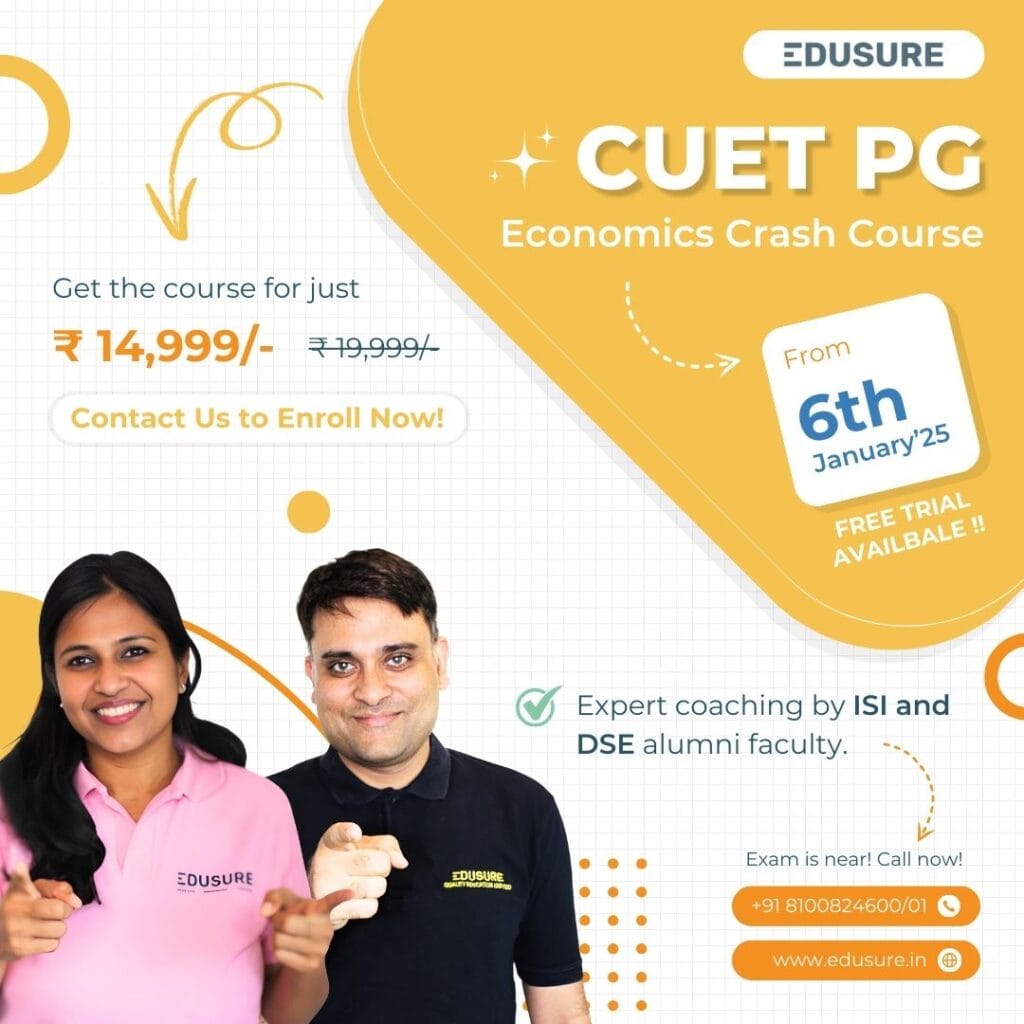CDS Entrance Exam Syllabus 2022
Microeconomics
- Consumer behavior Utility maximization and Demand
- Theories of production and cost
- Choice under uncertainty
- Perfect competition and Monopoly
- Basic models of Oligopoly
- Cournot, Bertrand and Stackelberg
Suggested textbook: Intermediate Microeconomics: A Modern Approach by H R Varian.
Macroeconomics
- National Income accounting
- Simple Keynesian model
- ISLM model,
- Solow growth model,
- Theories of money demand and money supply,
- Consumption and Investment.
Suggested textbook: Macroeconomics by Gregory N Mankiw.
Mathematics
- Algebra: Index Number; Logarithm; Arithmetic, Geometric and Harmonic
- Progression; Permutation and Combination; Theory of Equations.
- Matrix Algebra: Concept of Matrix and Vectors; Matrix Addition and Multiplication; Commutative, Associative and Distributive Laws; Identity and Null Matrix; Transpose and Inverse of a Matrix; Determinant, Cramer’s rule.
- Calculus: Functions; Limits; Continuity; Differentiation of Functions of one or more Variables including Trigonometric Functions; Unconstrained Optimization; Definite and Indefinite Integrals; Integration by Parts and by Substitution. First Order and Second Order Difference/Differential Equations.
Suggested reference: Fundamental methods of mathematical economics by Alpha C Chiang.
Statistics
- Probability Theory: Classical and Axiomatic Definition of Probability; Calculus
of Probability; Conditional Probability and Statistical Independence; Random Variables; Distribution Functions; Density and Mass Functions. - Descriptive Statistics: Summarization of Data; Frequency Distribution and it’s Graphical Representation; Bivariate and Multivariate Frequency Distribution; Measures of Central Tendency, Measures of Dispersion, Skewness, Kurtosis and correlation.
- Sampling: Concepts of population and sample, Sampling Design and Random Sampling
- Theoretical and Sampling Distributions: Mean, Variance and Other Moments
of Binomial, Poisson, Negative Binomial, Geometric, Normal and Rectangular Distribution. Concept of Standard Normal, Chi Square, F distribution and their moments. - Statistical Inference: Point Estimation, Unbiasedness, Confidence Interval, Ordinary Least Square, Goodness of Fit; Hypothesis Testing: Null and Alternative Hypothesis; Type I and Type II error, Size of a test. Acceptance and Rejection Region, p-value. Analysis of Variance (ANOVA).
Suggested book: Goon, Gupta and Dasgupta (2013) Fundamentals of Statistics, World Press Private Ltd.
Indian Economy
In this topic various issues in the contemporary Indian economy will be covered and suggested references include last two years’ Economic Survey published by the Ministry of Finance, Government of India and Reserve Bank of India Bulletin and Annual Report along with other publications
The entrance examination consists of 100 multiple choice objective questions. Each question will have four choices in answers with only one correct answer. There will be negative marking for wrong answers. Each correct answer carries three marks and one mark would be deducted for each wrong answer. The examination is of two hours duration and maximum mark is 300. Prospective candidates may find question papers of the previous years on our website www.cds.edu


